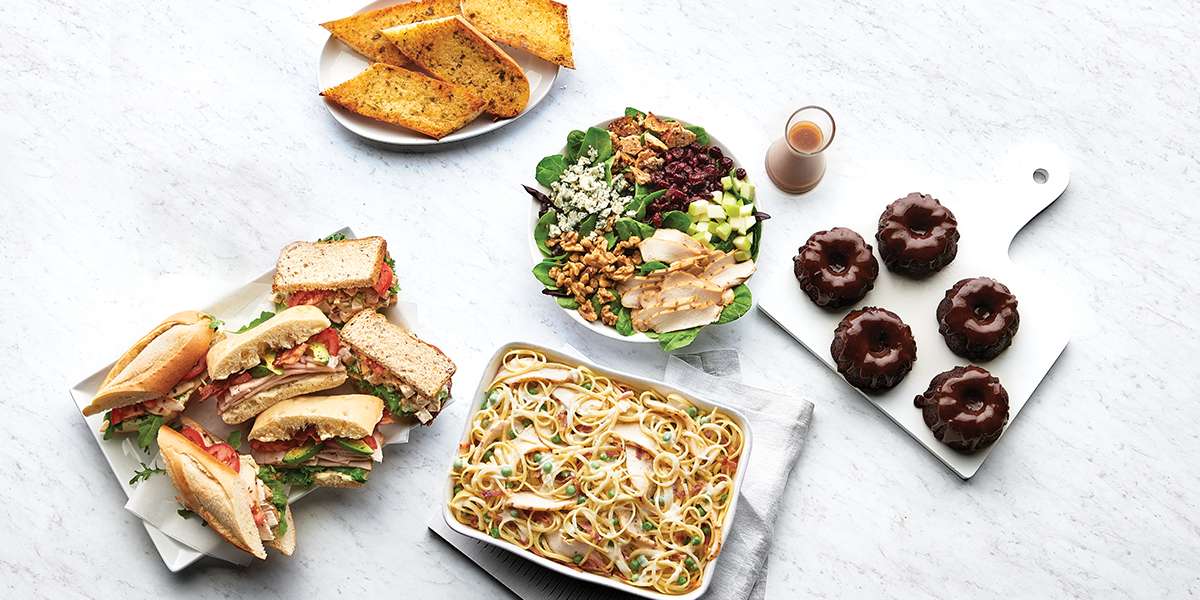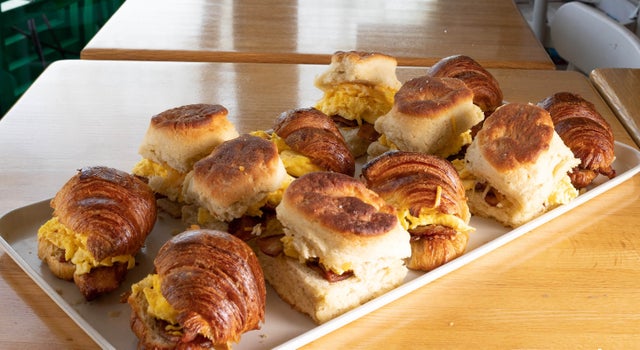Delicious Options in Finger Food Catering Maddington for All Ages
Delicious Options in Finger Food Catering Maddington for All Ages
Blog Article
Understanding the Art of Bakeshop Products: From Freshly Baked Breads to Alluring Pastries and Finger Foods
From the scientific research behind the best loaf of bread, where fermentation and gluten advancement play critical roles, to the skill needed for developing split pastries, each aspect reveals an engaging story of craftsmanship. The flexibility of finger foods illustrates how taste and texture can be skillfully incorporated to involve diverse preference choices.
The Science of Bread Making
At the heart of every loaf of bread lies a fascinating interaction of chemistry and biology. The process of bread making starts with the combination of flour, salt, yeast, and water-- each component playing an essential duty in the final item. Flour includes healthy proteins, mainly glutenin and gliadin, which, when combined with water, type gluten (Catering Maddington). This flexible network is important for capturing gases generated during fermentation.
Yeast, a living microorganism, ferments the sugars present in the flour, creating co2 and alcohol in the procedure. The carbon dioxide gas produces bubbles in the dough, creating it to increase and create a light texture. The temperature and moisture throughout fermentation significantly influence yeast task and, subsequently, the bread's flavor and appearance.

Learning Pastry Techniques
Just how can one accomplish the fragile balance of appearance and flavor that specifies outstanding pastry? Understanding pastry techniques calls for a deep understanding of ingredients, approaches, and the science behind them. Essential to this craft is the selection of high-grade components-- flour, butter, sugar, and eggs-- each playing an essential duty in the final item's flavor and appearance.
The method of lamination, which entails folding layers of dough and butter, creates the preferred flakiness in breads like croissants and puff pastry. Accuracy in temperature is crucial, as butter must stay cold to make certain optimum layers. Correct blending techniques, such as the creaming strategy for cakes, make sure also incorporation of air and fat, resulting in a light and ventilated crumb.
Additionally, maintaining the best humidity levels during cooking can significantly impact the outcome, ensuring that breads rise correctly and achieve that golden-brown finish. Finally, the art of bread likewise demands persistence and method; each attempt boosts one's skill and understanding of the intricate equilibrium called for to develop alluring breads that thrill the senses. Mastery in these techniques inevitably identifies an experienced pastry chef from an amateur.
Types of Finger Foods
The globe of culinary delights expands past breads to encompass a wide array of finger foods, which are commemorated for their benefit and convenience. These bite-sized treats are best for social gatherings, offering a variety of tastes and appearances that provide to diverse tastes buds.

On the sweeter side, miniature tarts and bite-sized cupcakes provide a wonderful coating to any meal, interesting those with a craving for sweets. Cheese and charcuterie boards serve as an advanced selection, permitting visitors to tailor their attacks with a variety of meats, cheeses, nuts, and fruits.
Flavor Profiles in Baking
Baking is an elaborate dance of flavor profiles that combines sweet, tasty, and umami notes to produce a harmonious experience for the palate. Understanding these accounts is essential for bakers go to the website seeking to boost their creations.
Sweet taste often offers as the structure in baked items, with sugars, fruits, and all-natural sweeteners enhancing flavor depth. Active ingredients such as delicious chocolate and sugar introduce intricate pleasant notes that can either control or match other tastes. Alternatively, mouthwatering aspects, commonly located in pastries and breads, provide equilibrium and comparison. Active ingredients like cheeses, spices, and natural herbs can change a basic dough into a complex taste experience.
Umami, regularly neglected in cooking, plays a considerable role in enhancing tastes. Components such as aged cheeses, fermented items, and even specific nuts add to a full-flavored deepness that enhances general preference.
In addition, the interaction of level of acidity from active ingredients like buttermilk or citrus enthusiasm can lighten up tastes, offering a revitalizing counterpoint to sweet taste. By attentively combining these flavor profiles, bakers can craft products that resonate with varied palates, developing a remarkable culinary experience. Eventually, understanding flavor accounts is key to development in the globe of baking.
Essential Baking Tools and Components
Recognizing flavor profiles in baking collections the phase for picking the right devices and ingredients that help with the development of exceptional baked goods. The foundation of successful baking lies in having vital tools at hand. Secret products include mixing bowls, determining mugs, and spoons for accuracy, in addition to a strong stand mixer or hand mixer for easy mixing. A reliable collection of cooking pans-- such as sheet site web pans, loaf pans, and cake pans-- is essential for achieving preferred structures and shapes.
In regards to ingredients, quality issues significantly. Flour functions as the foundation of a lot of recipes; picking the appropriate type-- be it bread, bread, or all-purpose flour-- can dramatically impact the outcome. Sugar not just sweetens but additionally adds to appearance, while eggs function as binders and leavening representatives. Baking powder and cooking soda are essential for developing lift in cakes and pastries.
In addition, incorporating taste boosters like vanilla extract, flavors, and citrus enthusiasm can elevate your developments. By ensuring access to these basic tools and active ingredients, bakers can confidently start their cooking journey, crafting a diverse variety of delightful baked products.
Conclusion
To conclude, the art of pastry shop products encompasses an extensive understanding of both innovative strategies and scientific principles. Proficiency in bread production, bread preparation, and finger food presentation reveals the complex partnerships in between processes and components. Exploring varied taste accounts enhances the baking experience, while necessary devices and components supply the structure for success. Inevitably, the captivating globe of cooking prospers on the unified interaction of science and creative thinking, leading to a myriad of delightful culinary developments.
Exactly how can one attain the fragile balance of appearance and taste that specifies extraordinary bread? Fundamental to this craft is the option of premium ingredients-- flour, butter, sugar, and eggs-- each playing Website a critical role in the final item's flavor and appearance.

Recognizing taste profiles in baking sets the phase for selecting the right devices and components that help with the creation of remarkable baked items. Checking out varied flavor profiles enriches the baking experience, while important tools and ingredients provide the structure for success.
Report this page